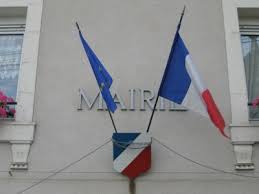About
Saint-Benoit-sur-Seine is a peaceful village with two different landscapes:
The urban zone on the edge of the Seine valley, with its lush greenery and numerous river branches, and the agricultural zone in the Champagne chalk hills, with its arable farming, woods and wind farms.
The earliest written documents concerning Saint Benoît sur Seine date back to around the year 1000. In 1075, the bishop of Troyes, Hugues de Dampierre, confirmed the donation made by his predecessors of two churches in his diocese to the abbey of Fleury sur Loire (now Saint Benoist sur Loire). Saint Benedict's prestige was immense: in the 12th century, there were 22,000 Benedictine monasteries in what is now France, and the abbey of Fleury sur Loire, founded in 650, had taken possession of Saint Benedict's relics around 675. Its influence was considerable, and the reputation of its schools spread far and wide.
Saint Benoît's name was Thoriacus, from which came Thurey. Specialists translate it as domaine de Thuria or Thoria, but some say that Thoria was the owner of the estate, while others think that Thoria or Thor or Thora comes from a Gaulish word Turra, which designated a height. In this case, it's thought to come from the fact that Saint Benoît is built on the first slopes of the neighboring mountains (Monts Cochot, Bel Air).
Recent excavations, carried out systematically between 1964 and 1971, revealed at least one interesting site per village in the entire region explored (the right bank of the Seine from Troyes to Méry). The Saint Benoist site was explored at "la Perrière", in the vicinity of the water tower. Carried out in a scientific manner, the excavations gave rise to precise surveys and meticulous descriptions, so as to make the results seriously exploitable in the present and in the future.
Circular and rectangular enclosures, some of which were used for funerary purposes, in which graves were found, i.e. pits dug in the chalk, and objects (known as funerary furniture) in bronze, iron, glass and sometimes gold. Some belonged to warriors: swords, remnants of iron shields, spears; others came from women of the time: anklets, bracelets and rings, rigid necklaces, fibulae (a kind of safety pin), some coins in the most recent graves, but also bottles and bracelets.
In 41 pits, we found Celtic (Gaulish) bodies belonging to the Tricasse tribe, whose domain covered more or less the former diocese of Troyes, all facing north and lying on their backs. These burials date from the last five centuries B.C. (La Tène or 2nd Iron Age), 11 of which were Gallo-Romans, their heads facing west. It is this difference in orientation that has enabled us to distinguish the different eras. The Saint-Benoît area has therefore been inhabited since at least 5 centuries BC, and it is almost certain that the Seine and Aube valleys were similarly populated.
The commune boasts an elementary school (CM1 and CM2), a multi-purpose hall and a "boîte à livres": a self-service book depository open to the public 24/7.
Saint-Benoit-sur-Seine is home to a number of shops and two associations.
source : www.troyes-champagne-métropole.fr
Opening
| Days | Hours |
|---|---|
| Monday | 14h00 to 18h00 |
| Thursday | 14h00 to 18h00 |
| Friday | 14h00 to 18h30 |
